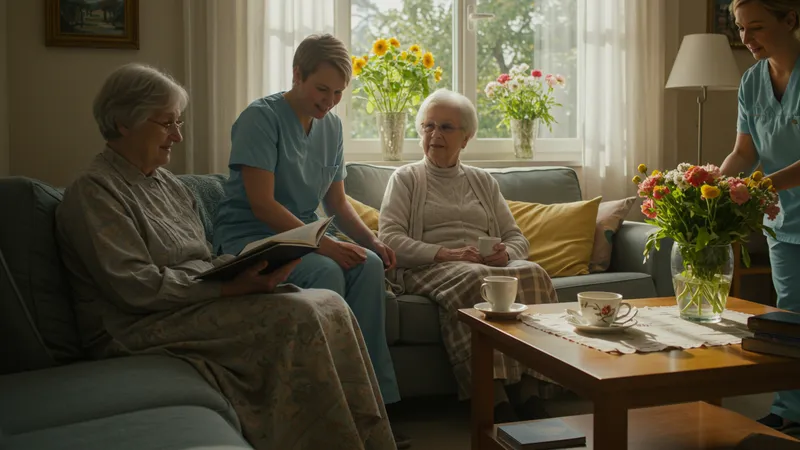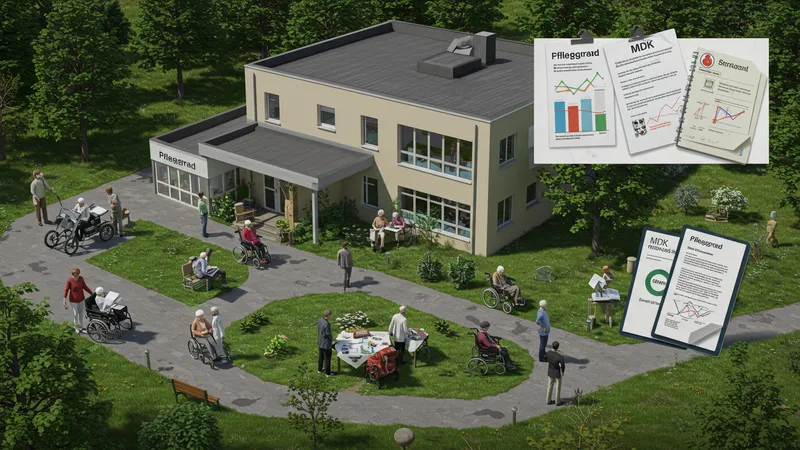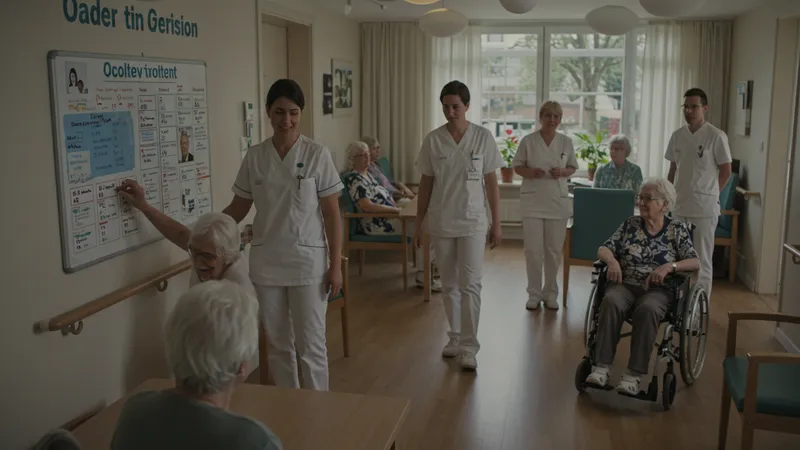

Elderly care encompasses a broad range of support systems designed for seniors who require different levels of assistance as they age. Rather than being limited to only nursing homes or medical interventions, elderly care covers a variety of options—each intended to help older adults maintain their quality of life, independence, and dignity for as long as possible. These options can include assistance with daily routines, specialized residential settings, and the involvement of professional caregivers, all structured to meet varying individual needs.
The landscape of elderly care in Germany is multifaceted, shaped by demographic changes, policy frameworks, and a high standard of living. Choices include home-based support, day care centers, assisted living residences, and long-term nursing care. Understanding how each option operates and the criteria for eligibility is essential for families seeking the best solutions for their loved ones.

Ambulante Pflege, or home care services, enable seniors to remain in their own homes while receiving professional support with daily living tasks, medical monitoring, and companionship. This solution is particularly popular in Germany, as it combines comfort and familiarity with tailored professional assistance, reducing the need for institutional care until it is absolutely necessary.
Stationäre Pflegeheime offer comprehensive 24-hour care for individuals whose needs exceed what home-based support can provide. Facilities are equipped with qualified staff and medical infrastructure, catering to elderly residents with significant physical or cognitive challenges. Despite higher costs, many families in Germany rely on nursing homes due to increasing life expectancy and changing family structures.
Betreutes Wohnen, or assisted living, represents a hybrid approach: seniors live independently in dedicated apartments or communities but have access to on-site support and emergency aid if needed. This model is gaining traction in Germany due to its flexible support structure and strong focus on autonomy, appealing to seniors who value social engagement alongside security.
Comparing these options reveals meaningful differences in the balance between independence, cost, and level of care. Factors influencing choice include the senior’s health status, family situation, location, and the availability of public subsidies. In Germany, statutory long-term care insurance offers capping for costs, but out-of-pocket contributions can still be significant, demanding careful decision-making from families.
While each care option offers distinct advantages and trade-offs, understanding how they work in practice is crucial. On the next page, we’ll delve deeper into Germany’s approach to funding and regulating these systems, revealing how families navigate the practical and financial realities of elderly care. The deeper details reveal even more valuable insights ahead…
Germany’s elderly care system is built upon a structured regulatory foundation that aims to ensure quality, accessibility, and broad coverage. Central to this framework is the Statutory Long-Term Care Insurance (Pflegeversicherung), a mandatory program that provides financial assistance to those requiring care, regardless of where they receive it. This system mandates contributions from all citizens, creating a shared responsibility and steady funding base for diverse care options.

Funding for care options such as ambulante Pflege, stationäre Pflegeheime, and betreutes Wohnen is allocated based on assessed needs, determined by the Medical Service of Health Insurance (MDK). The MDK evaluates each applicant’s physical and cognitive abilities, assigning them a care level (Pflegegrad) that correlates with the amount of financial support they are eligible for. This ensures assistance is proportional to actual requirements, optimizing resource distribution.
Despite public insurance covering a substantial portion of expenses, out-of-pocket payments remain significant—especially for full-time nursing home care, where costs can surpass what insurance covers. Families often supplement funding through savings or social assistance programs (Sozialhilfe) if necessary. As Germany’s population ages, policymakers continuously adjust benefits and contribution models to keep the system sustainable and responsive to emerging demands.
The regulatory environment also establishes quality standards for care providers. Inspections, resident rights, and grievance procedures are reinforced by federal and state laws. Independent oversight bodies regularly review facilities, and detailed ratings are published online, empowering families to make informed choices. This regulatory vigilance has contributed to high but evolving care benchmarks throughout the country, supporting ongoing efforts to match seniors’ needs with practical, affordable services.
Each elderly care option in Germany offers a distinct blend of independence and professional backing. Ambulante Pflege stands out for those wishing to reside in familiar settings, with flexible scheduling based on individual preferences. Caregivers usually visit several times a week, providing everything from help with bathing to medication management, while close family members often remain involved in daily routines to reinforce social and emotional well-being.

In contrast, stationäre Pflegeheime deliver round-the-clock supervision and medical support for those facing complex or severe health issues. The transition to residential care often signals a shift to total professional oversight, with structured activities, communal dining, and rehabilitation services available on-site. Visiting hours and resident councils help maintain vital personal connections, emphasizing person-centered approaches to care delivery.
Betreutes Wohnen bridges the gap between full independence and intensive care. Residents live in their own furnished spaces within a supportive community, benefiting from emergency call systems, meal options, and optional housekeeping or recreational programming. This middle-ground arrangement appeals to seniors who value privacy but want the peace of mind that comes with accessible assistance.
Deciding between these pathways requires careful consideration of the senior’s capabilities, lifestyle preferences, and risk factors. State agencies, social workers, and family physicians collaborate to guide families through this assessment, ensuring that the chosen setting provides the optimal mix of dignity, security, and daily engagement.
Cost is a significant factor when selecting an elderly care option in Germany. Ambulatory care services (ambulante Pflege) typically range from €2,000 to €3,000 per month, influenced by the intensity and frequency of care provided. These costs are partly offset by statutory long-term care benefits, though additional charges may arise for evening, weekend, or specialized medical support.

Nursing home care (stationäre Pflegeheime) is generally the most expensive, with fees averaging €3,500 to €4,500 monthly. While Pflegeversicherung pays a fixed portion based on the care level, residents often assume additional expenses for board, lodging, and investment or maintenance costs not covered by insurance. This can create financial challenges, especially when personal resources are limited or depleted.
Assisted living (betreutes Wohnen) presents a more moderate financial commitment. Prices typically range between €1,500 and €3,000 monthly, depending on location, amenities, and the scope of support services included. Residents pay rent, basic care fees, and occasional extras for tailored programs or specialist visits, making cost estimation essential before a final decision is made.
Many families in Germany approach financial planning for elderly care with a mix of savings, insurance, and in some cases, property sales. State-sponsored counseling services provide guidance on entitlements, subsidies, and contract terms, helping families navigate the financial landscape and secure sustainable long-term care for their loved ones.
Maintaining high standards in elderly care is a top priority in Germany. Facilities are subject to regular inspections and public ratings, ensuring that care providers adhere to strict regulations regarding staff qualifications, hygiene, and resident autonomy. Feedback from residents and families is actively sought, forming the basis for ongoing quality improvements and transparency within the sector.

However, the system faces challenges: demographic shifts have created a shortage of qualified caregivers, while rising operational costs place strain on providers and residents alike. Policy reforms are in progress to attract and retain more specialists, including streamlined certification processes for international nursing staff and expanded training opportunities domestically.
Innovation is also making waves in German elderly care. Technologies such as digital monitoring systems, telehealth consultations, and networked emergency call devices are enhancing both safety and independence. Pilot programs in “smart” assisted living facilities are yielding promising results for managing chronic conditions, early intervention, and supporting mental well-being among residents.
Looking forward, the evolution of elderly care in Germany hinges on a delicate balance between tradition and modernization. By combining regulatory oversight, community engagement, and technological advancement, the country continues to refine its approach—delivering tailored, respectful support for seniors and their families.